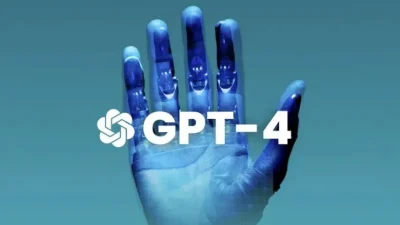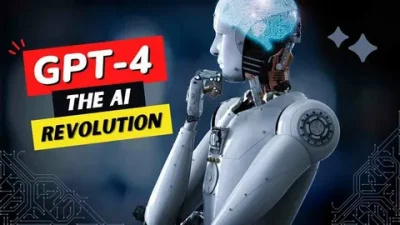Artificial intelligence models like GPT-4 have revolutionized the way we interact with technology. They process and respond to a vast range of queries, offering insights, assistance, and even creative outputs. However, users sometimes encounter inaccurate or unsatisfactory answers. This article explores why GPT-4 might fail to deliver precise responses, focusing on potential user errors, the limitations of the model, and strategies for better communication.

Understanding GPT-4’s Capabilities and Limitations
To begin, it’s essential to understand how GPT-4 works. It is a large language model trained on extensive datasets, designed to predict and generate coherent responses based on input. While powerful, GPT-4 operates on certain principles and constraints:
- Statistical Patterns, Not Fact-Checking: GPT-4 generates responses based on patterns in its training data, not by verifying facts in real-time.
- Lack of Real-Time Updates: The model’s knowledge is static, capped at its last training date.
- Dependency on Input Quality: The model relies heavily on clear, concise, and well-structured prompts.
Key Characteristics of GPT-4
| Characteristic | Description |
|---|---|
| Training Data | Extensive datasets up to a specific cut-off date |
| Nature of Responses | Pattern-based generation, not active verification |
| Language Comprehension | Proficient but dependent on input structure |
| Adaptability | Flexible but limited by lack of contextual understanding |
While these limitations are inherent, user behavior also plays a critical role in determining the accuracy of GPT-4’s outputs.
Common User Errors That Lead to Inaccurate Responses
In many cases, the root cause of an unsatisfactory response lies in how the user formulates their query. Below are the most common mistakes users make and their implications.
1. Vague or Ambiguous Prompts
GPT-4 thrives on specificity. When prompts lack detail or clarity, the model is forced to guess the intended meaning, often resulting in irrelevant or incorrect answers.
Example of a vague query:
“Tell me about history.”
Such a query leaves GPT-4 uncertain about the scope—does the user want an overview of world history, a specific era, or a country’s history? Adding specifics dramatically improves response quality.
Improved query:
“Provide a brief overview of the French Revolution.”
2. Overly Broad Questions
Broad questions overwhelm the model, as they lack a clear focus.
Example of an overly broad question:
“Explain science.”
A model can attempt to answer, but the response will likely be generic and unsatisfactory. Narrowing the scope leads to more useful outputs.
Improved query:
“Explain the principles of Newton’s laws of motion in simple terms.”
3. Insufficient Context
GPT-4 processes information in a single conversational thread, so if a user provides minimal context, it struggles to connect the dots. Adding relevant background information can resolve this.
Example of insufficient context:
“Why is this important?”
Without prior clarification of “this,” GPT-4 cannot provide a meaningful answer. Rephrasing the question to include context leads to greater accuracy.
Improved query:
“Why is renewable energy important for combating climate change?”
4. Complex or Convoluted Sentence Structure
While GPT-4 can handle nuanced language, overly complicated phrasing may confuse it.
Example of convoluted phrasing:
“In the case where the subject matter pertains indirectly to societal frameworks, how might implications diverge?”
Simplifying such prompts results in clearer responses.
Improved query:
“How do societal frameworks influence decision-making?”
5. Expecting Real-Time Updates
GPT-4 lacks access to real-time information. Questions about current events often yield outdated or speculative answers.
Example of a real-time query:
“What is the current price of Bitcoin?”
Such queries are better suited for live-data sources.
Improved approach:
“Provide general information about Bitcoin’s volatility over the years.”
Common User Errors and Solutions
| User Error | Description | Solution |
| Vague Prompts | Lack of specific details | Add clarity and focus |
| Overly Broad Questions | Too wide in scope | Narrow down the query |
| Insufficient Context | Missing necessary background | Provide contextual information |
| Complex Sentence Structure | Overly complicated phrasing | Simplify and use direct language |
| Real-Time Information Requests | Queries about current events | Focus on static or general knowledge |
How to Maximize the Accuracy of GPT-4 Responses
Improving the quality of your interactions with GPT-4 requires thoughtful adjustments to how you approach the tool. Below are strategies to achieve better results:
1. Use Step-by-Step Prompts
Break complex queries into smaller, manageable parts. This helps GPT-4 process the request more effectively.
Example: Instead of asking:
“Explain quantum mechanics and its applications in technology.”
Break it down:
“What is quantum mechanics?” “What are the main principles of quantum mechanics?” “How is quantum mechanics applied in modern technology?”
2. Leverage Examples
Providing examples within your query guides GPT-4 to align its response with your expectations.
Example:
“Explain the concept of photosynthesis. For example, include the role of chlorophyll.”
3. Specify Output Format
Indicate how you want the answer structured—paragraphs, bullet points, or tables.
Example:
“Summarize the key causes of World War I in a bullet-point list.”
4. Acknowledge GPT-4’s Static Nature
Avoid relying on GPT-4 for live data or recent developments. Use it for analysis, summaries, and explanations of established topics.
5. Refine and Iterate
If the initial response is unsatisfactory, refine your prompt and try again. Iteration often leads to improved results.
Why Context Matters: A Deep Dive
Context is pivotal when communicating with GPT-4. Without it, even the most well-constructed prompts can fail. Let’s consider an example:
Initial Query:
“Why did it happen?”
This question is ambiguous without prior information. Adding context transforms the query into something actionable:
Improved Query:
“Why did the Industrial Revolution begin in Britain?”
The added detail enables GPT-4 to provide a focused and accurate response.
Common Scenarios Where Context Is Crucial:
- Discussing historical events.
- Asking for explanations of technical concepts.
- Seeking recommendations or comparisons.
Conclusion
Inaccurate answers from GPT-4 often result from user errors, such as vague prompts, insufficient context, or overly broad questions. By understanding the model’s capabilities and limitations, users can optimize their interactions to achieve precise and relevant results. Clear, concise, and context-rich communication is the key to unlocking GPT-4’s full potential.





